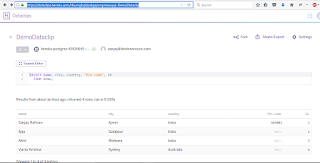Heroku : Deployment
Deployment There are many ways to deploy an app. You can use the command line and deploy using Git , or you can set up Pipelines to group stages of deployment, combined with Review Apps , which let you automatically deploy on a Pull Request. Finally, you can also deploy using a Heroku Button Replace myapp with the name of your app. Git Deploying with Git Git Cloning Existing Heroku Applications Deploying with Git Git is a powerful decentralized revision control system, and is the means for deploying apps to Heroku. You don’t need to be proficient with Git to use it for deploying code to Heroku, but you may find it valuable to learn the basics. Heroku apps expect the app directory structure at the root of the repository. If your app is inside a subdirectory in your repository, it won’t run when pushed to Heroku. Before you can push an app to Heroku, you’ll need to initialize a local Git repository and commit your files to it. For example, if you have an app in a ...
